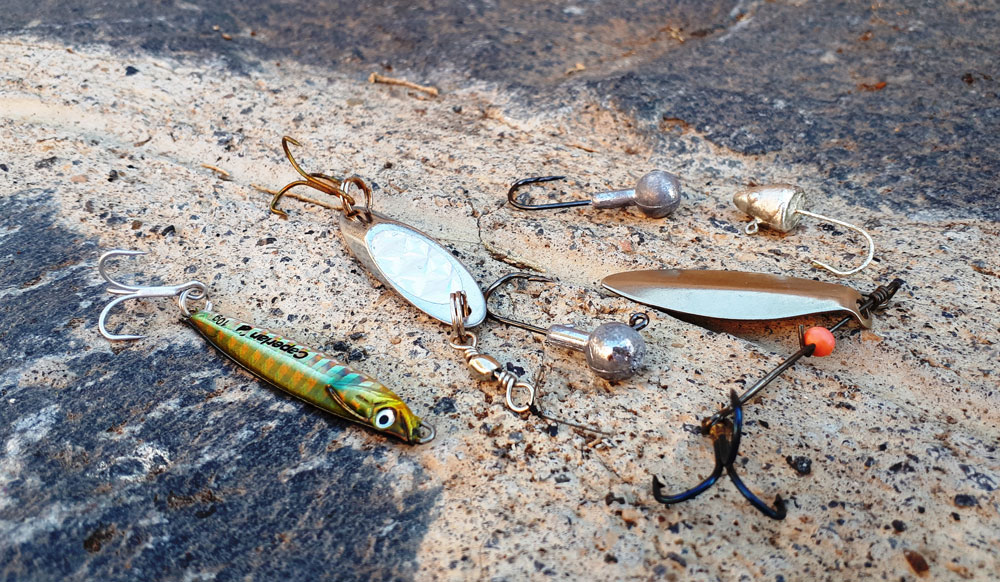Best Rod Action Extra Fast Jig 2024
Harnessing the Power of Extra-Fast Action Jigging Rods As the sun rises on the horizon and glints off the water, there's nothing quite like the feeling of anticipation that every…

Jig fishing is an effective and versatile technique that can be used to target multiple species. With the right jig and a little bit of extra effort, jigging can become an enjoyable and rewarding way to catch fish. If you’re looking for a new technique to try on your next fishing trip, jigging might just be a perfect choice.
Jig fishing is a unique and effective technique used by anglers to catch fish. It involves using jigs, which are metal or plastic lures with weighted hooks that are designed to imitate an injured baitfish.
Jigging requires the angler to move their jig up and down in the water column while retrieving it, making it ideal for catching bottom-dwelling species such as flounder, sea bass, halibut, and cod. In addition, jigs can also be used to catch suspended species like walleye and lake trout. For this reason, jigging is one of the most versatile techniques available for anglers looking to target multiple species.
When jig fishing it is important to choose the right jig for the job. Jigs come in a variety of sizes and colors, so it is important to match the jig size and color to the type of fish you are targeting. Additionally, jigs can be fished at different depths by adjusting your retrieval speed, making jigging an effective tool for fishing in deeper water as well.
It is also important to remember that jigs require more effort than other lures. Because jigging requires actively moving the jig up and down in order to imitate an injured baitfish, anglers need to put in the extra effort if they want their jigging technique to be successful. With practice, however, jig fishing can become a rewarding and effective way to catch fish.
Jig fishing offers a number of benefits to anglers, including:
When jig fishing it is important to consider the following tips:
By following these tips, jig fishing can become an enjoyable and rewarding way to catch fish.
When jig fishing, you can either jig vertically or horizontally.
Depending on the type of fish you’re targeting, different sizes, shapes, and colors may work better than others. Each type of jigging method also has its own unique set of techniques and nuances that anglers should master in order to become successful at jig fishing.
Whether jigging vertically or horizontally, jigs are a great way to target fish in many different types of water and can be very effective when used correctly.
When jigging, it is important to choose the right jig for the job. Factors such as depth of water, type of fish you’re targeting, and condition of the water will all affect which jigs are best suited for jig fishing. Choosing the wrong jigs may result in a lack of bites or an inadequate presentation that won’t trigger strikes from the fish.
For beginner anglers, it can be helpful to consult with local tackle shops or experienced jiggers who have an established knowledge base regarding jig types and colors. This can help narrow down potential choices and lead to better results when jigging on any given body of water.
Once you have chosen the right jigs for jig fishing, it is important to understand the nuances of jigging and how to properly utilize jigs in various types of water. With practice and a solid understanding of jigging techniques, anglers can become successful jiggers in any type of body of water.
Jigs come in various sizes, shapes, and colors that can be tailored to match specific species of fish or particular bodies of water. Anglers should also take into consideration the type of jigging method they plan on using when selecting their jigs. Vertical jigging requires heavier jigs with wider heads and horizontal jigging requires lighter jigs with smaller heads.
Knowing how deep you plan on fishing will also help you determine the size and weight of your jigs. Lastly, jigs come in a variety of colors and patterns that can be used to better imitate the baitfish present in the water you’re fishing.
Harnessing the Power of Extra-Fast Action Jigging Rods As the sun rises on the horizon and glints off the water, there's nothing quite like the feeling of anticipation that every…
The Indispensable Jigging Reel: A Must-Have for Every Angler's Arsenal Setting the Hook: The Art and Adventure of Jigging Every passionate angler knows that fishing isn't merely a hobby; it's…
Mastering the Line for Jig Fishing: A Pro's Guide to Maximizing Your Catch Reeling You In: The Exciting World of Jig Fishing As dawn breaks over the calm waters, there's…
Diving Into the World of Jig Fishing: An Exciting Adventure Awaits Welcome to the thrilling world of jig fishing, a technique that has captured the hearts of anglers around the…
Master the Art of Jigging Fishing: A Beginner's Guide Jigging Fishing: Your Next Big Adventure Jigging fishing is an exciting and engaging form of fishing that relies on the jig,…
Two Factors Why You Don’t Catch Fish A Jig The Principle Fishing Mistakes That Can Affect Your Game Fishing is always an exciting pastime. That is why spinning fishing has…